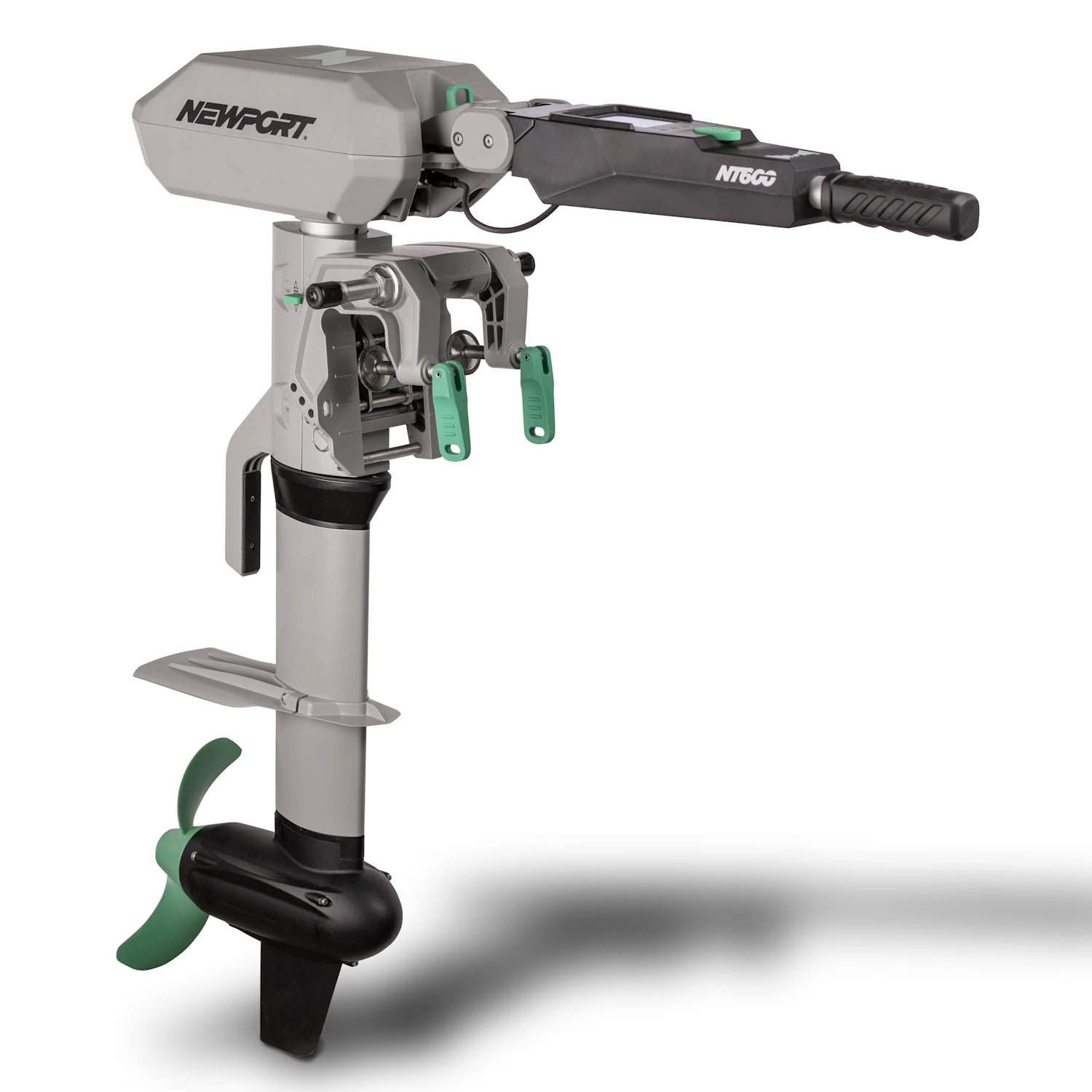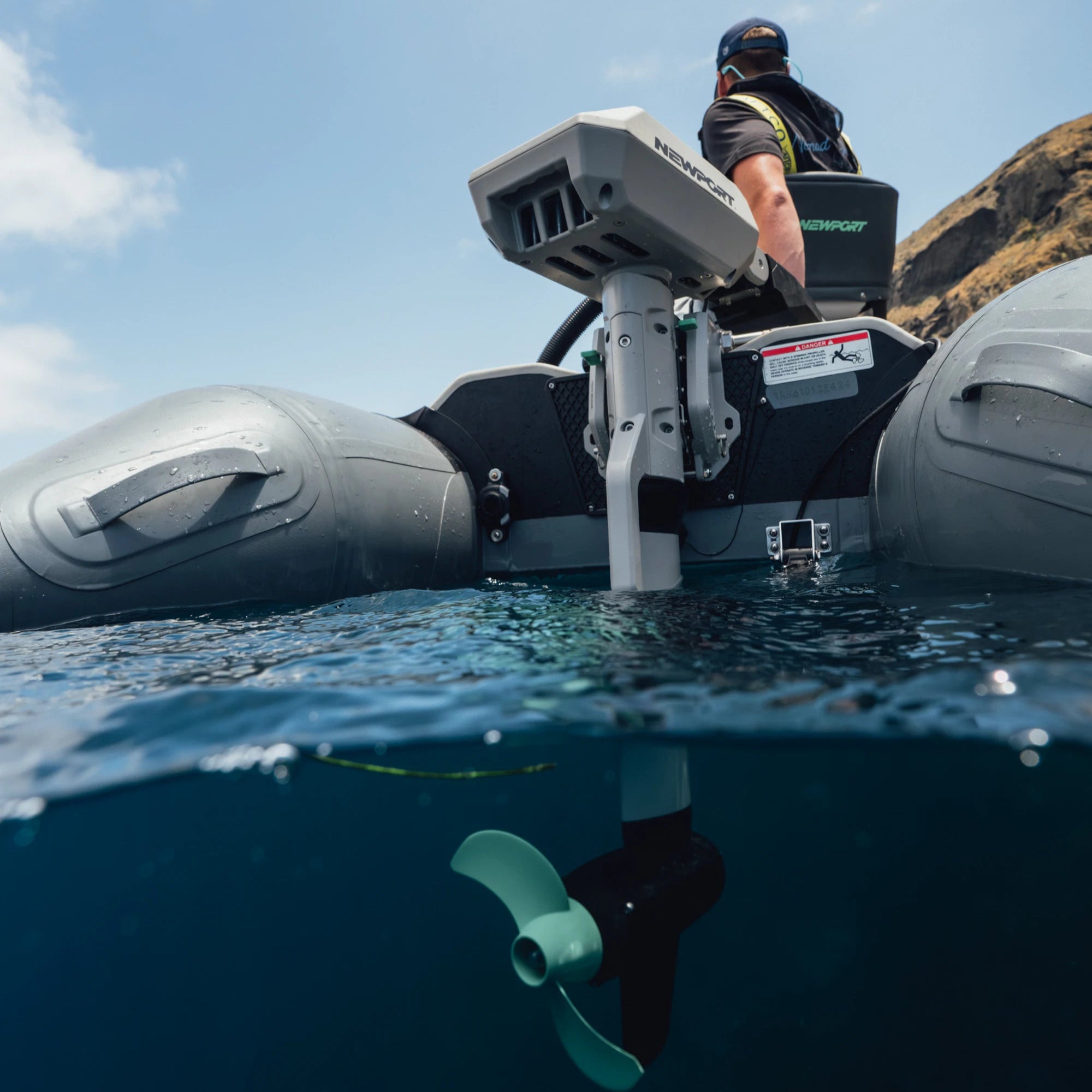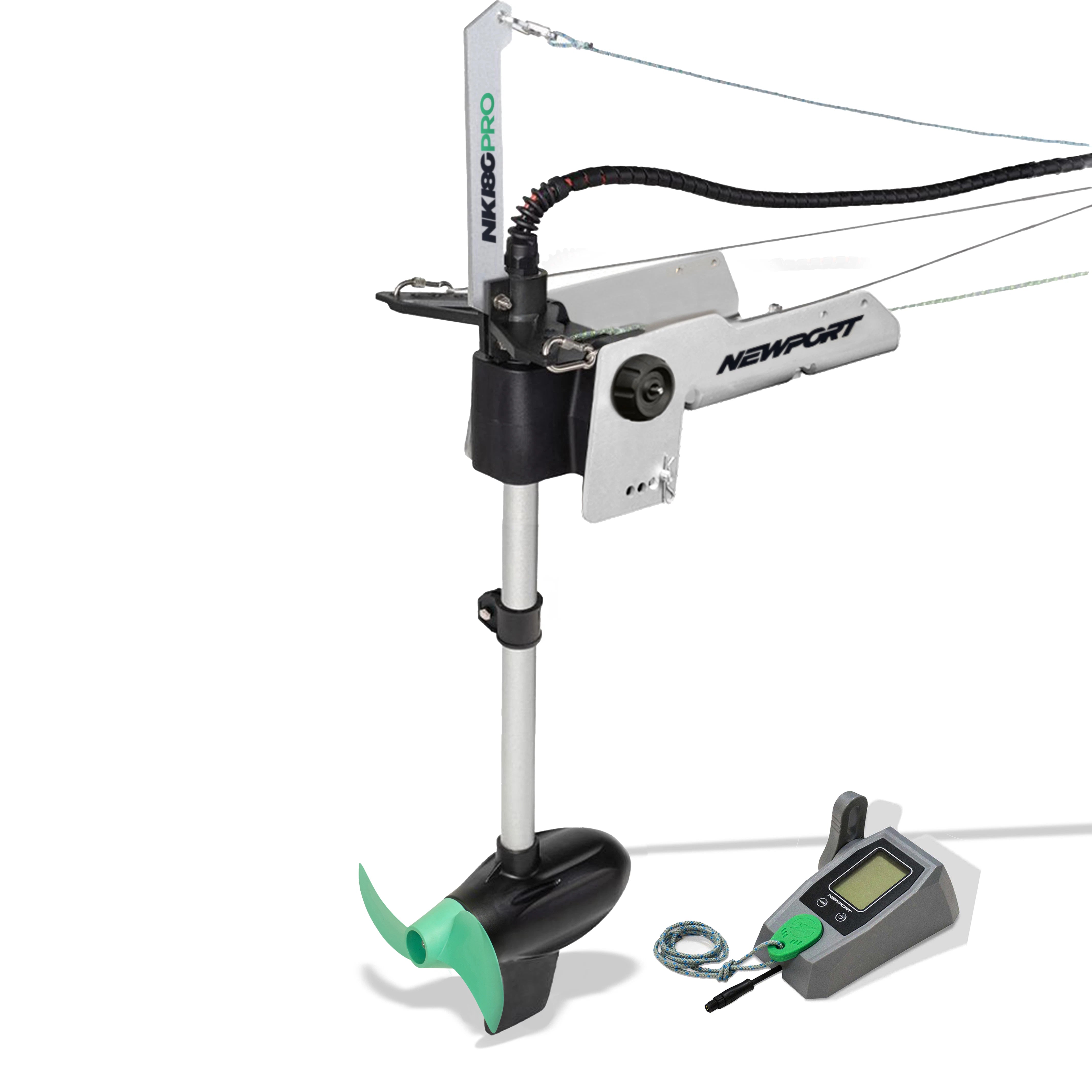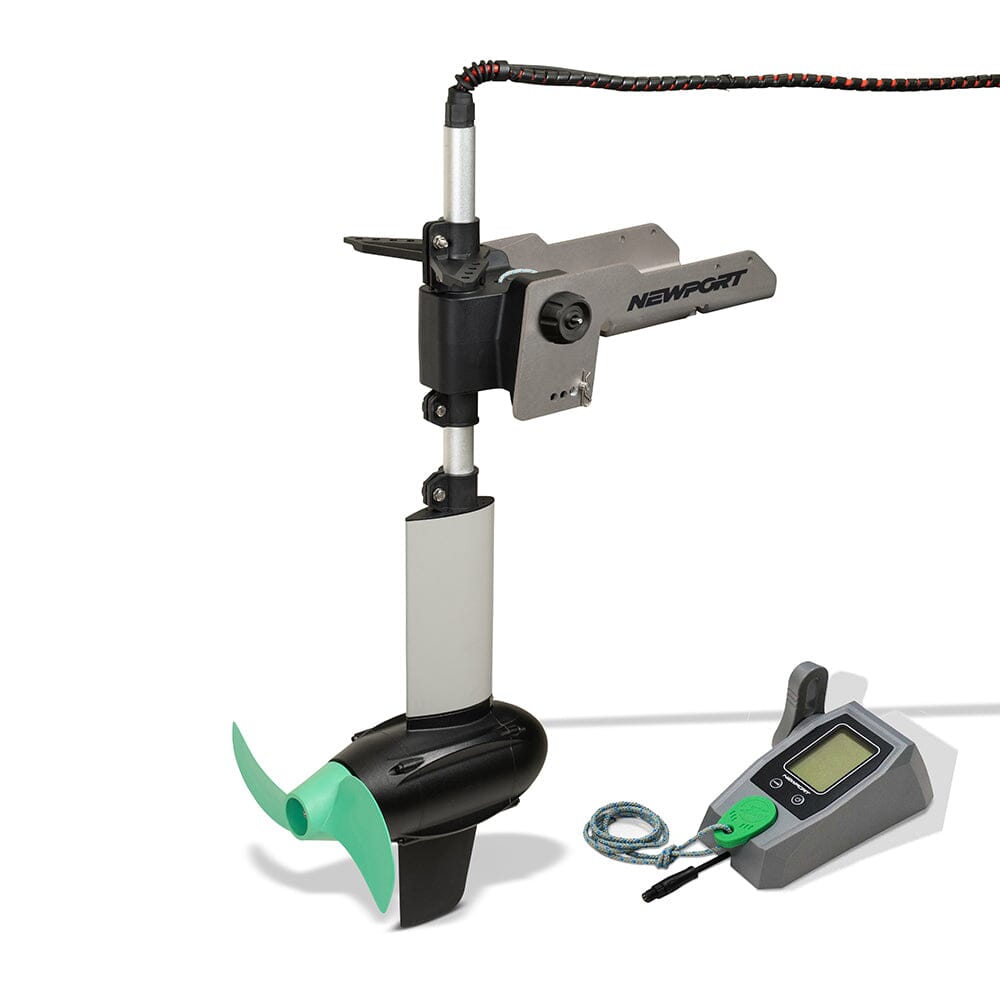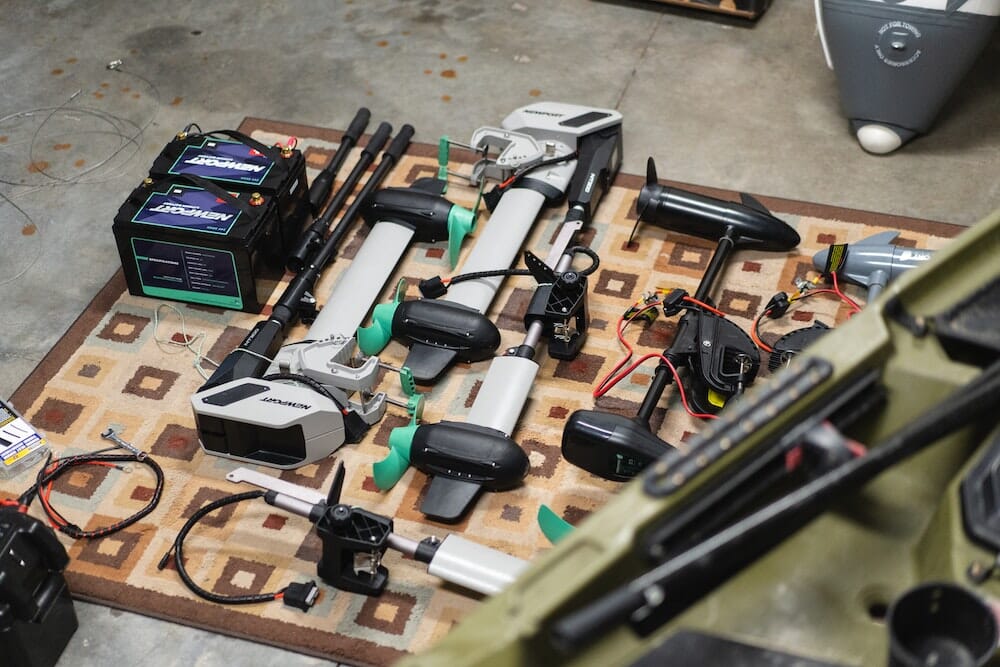A Comprehensive Guide to Maintaining Your Newport Electric Outboard Motor and LiFePO4 Battery
Owning a Newport electric outboard motor can be a fantastic way to enjoy hassle-free and eco-friendly fishing and boating adventures. To ensure that your outboard motor and LiFePO4 battery perform at their best, regular maintenance goes a long way. In this guide, we'll walk you through essential maintenance practices, from preventing corrosion to ensuring electrical conductivity, prolonging battery life, and even changing the propeller.
Corrosion Prevention
Saltwater and humidity can take a toll on any electric outboard motor and its electrical connectors. Preventing corrosion is key to maintaining your equipment's longevity:
- Rinse After Use: After each saltwater adventure, thoroughly rinse the motor and electrical connectors with a fresh water mist to remove salt and prevent corrosion.
- Thoroughly dry the motor, battery and their components.
- Apply Corrosion Inhibitor: Protect exposed metal surfaces and electrical connectors with a high-quality corrosion inhibitor such as Boeshield T-9 or CRC Dielectric Grease aerosol spray, which creates a protective barrier.
- Regular Inspection: Periodically inspect your motor and connectors for any signs of corrosion, and address issues promptly. If you notice corrosion or rust developing, simply disassemble the parts and clean with a soft wire brush and apply corrosion inhibitor, then reassemble the parts.
Electrical Conductivity
Proper electrical conductivity is essential for the efficiency and performance of your Newport outboard motor and battery system:
- Clean Contacts: Regularly inspect and clean electrical contacts with electrical contact cleaner and a soft wire brush to ensure a reliable connection.
- Apply corrosion inhibitor: we stand behind both Boeshield T-9 and CRC Dielectric Grease. These products leave an anti-corrosive layer for long-term protection.
- Tighten Loose Connections: Check all electrical connectors and tighten any loose connections to maintain a strong, conductive link.Battery Health and Longevity

The LiFePO4 battery is the powerhouse of your electric outboard system. Caring for it will ensure long-lasting performance:
- Proper Charging: Use a compatible LiFePO4 battery charger to avoid overcharging or deep discharging. This is essential for preserving battery life.
- Storage: When not in use for an extended period, store the battery in a cool, dry place. Maintaining a partial charge (around 50%) will prevent capacity loss.
- Battery Management System (BMS): Newport LiFePO4 batteries have an internal bluetooth enabled BMS to monitor the state of charge and overall health of your LiFePO4 battery. Keep tabs on your battery’s performance by searching and downloading the Newport BMS app in the app store, and connecting to your battery. All Newport Bluetooth lithium batteries are serialized with an engraved number on the topside of the battery. This serial number allows you to easily identify the battery you’re wishing to connect to.
Inspecting & Changing the Propeller

Regularly inspecting the propeller, propeller shaft and propeller components can help optimize performance or alert you when to replace a damaged prop. Here's how to do it:
- Tools Needed: Socket wrench set that includes ½” and ¾” sockets (depending on the Newport motor you are using), a propeller replacement kit and replacement drive pins. Replacement drive pins and prop kits are available on www.newportvessels.com or through support@newportvessels.com
- Steps for propeller inspection:
- Visually inspect the propeller itself. Chips, cracks and abrasive wear can affect the propeller's performance. If you’re noticing abnormal vibration, noise or pitch change in the propeller, it’s probably time for a replacement.
- Remove the old propeller by holding the propeller stationary and loosening the nut with a wrench. Counterclockwise rotation will loosen the prop nut.
- Inspect the propeller shaft and drive pin for damage.
- Clear any unwanted debris or fishing line from the prop shaft.
- Either install your new propeller and/or components, ensuring it's securely tightened, or re-install the existing undamaged propeller after servicing.
- Recommended Propellers: Consult the manufacturer's recommendations.
Final Notes
Proper maintenance of your Newport electric outboard motor and LiFePO4 battery is essential for hassle-free and enjoyable boating experiences. By actively preventing corrosion, maintaining electrical conductivity, and taking care of your battery, you can look forward to years of eco-friendly boating adventures. Additionally, having the ability to change the propeller when needed ensures that you're always operating at peak performance. Be sure to invest in the right tools and products to keep your equipment in top shape, and consider the product links provided for easy access to essential items.
With these maintenance tips and the right products at your disposal, you can enjoy your Newport electric outboard motor and LiFePO4 battery for many seasons to come.

